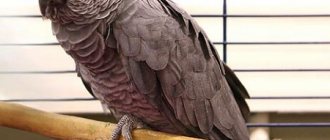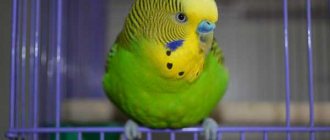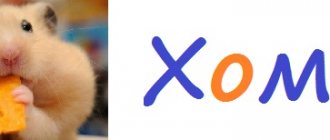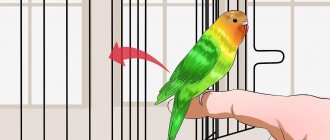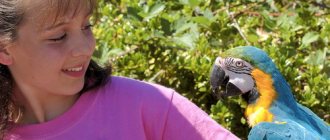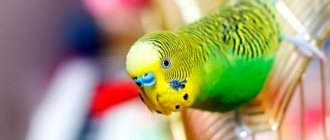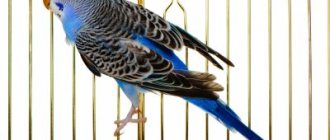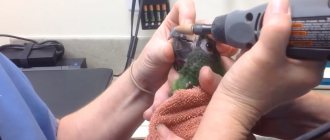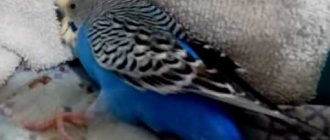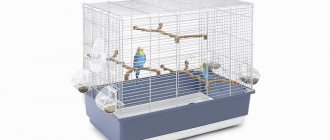From: Olga Tel.: 8903255
Message: Good afternoon! Our budgerigar (age 4, male) began to limp suspiciously on his right leg, using it to maintain balance, but not leaning on it. There is no visual damage. About a week has passed, no improvement. How can we help him? Should we bring the parrot to you for examination? Attached photo.
Good afternoon Yes, it’s better to bring it, since your parrot has hemiplegia. It also makes sense now to feed the drug sarcomin or nephrogep 10-15 grains into the drinking bowl every day for 1 month. Of course, you should do laboratory tests on your parrot and, of course, x-rays and possibly an ultrasound.. In some cases, such a disease may be associated with the work of the heart. Then we cannot do without an ECG! Sincerely, Vladimir Romanov
Hemiplegia in a budgerigar
Causes of the problem
The most common sources of an exotic friend not stepping on toes. Various damages:
- mechanical shocks,
- burns,
- frostbite,
- injuries from chemical agents.
The bird can be injured due to its activity, careless handling of the owner, aggressive animals or birds living with the parrot. This happens especially often with young, actively growing specimens, as well as with parrots during the molting period, when the pet needs more calcium. A bruise or slight sprain is a relatively minor injury; a more serious problem is a dislocation, open or closed fracture. If the parrot does not stand on one leg, first of all you need to examine the limb.
If the bird is severely bruised, it pulls its leg towards its body and stops leaning on it. As a result of a dislocated joint or sprained tendon, blue discoloration and swelling are observed in the damaged area. With an open fracture, bleeding occurs. It should be stopped with Betadine or hydrogen peroxide. With a closed fracture, the feathers at the site of injury are ruffled, the bird moves its paw to the side. After a burn or frostbite, the injured limb turns red and swells, then a brown scab forms.
In case of minor mechanical damage, the parrot is placed in a cage and temporarily not released. It is necessary to carefully monitor your pet's diet. If your winged pet does not want to eat, you need to force feed it, because a bird without food quickly weakens.
If the injury is serious, you should contact a veterinarian for medical attention as soon as possible. An unnatural position of the paw, redness, swelling, deterioration in the general condition, lethargy and apathy of your beloved bird is a reason to urgently consult an ornithologist. In the event of a dislocation or fracture, the limb must be fixed in the correct position, otherwise it may not heal correctly. If this is not done, then the leg atrophy is possible, and the bird will remain crippled.
What can cause a parrot's legs to fail?
Parrots are active and curious pets; due to their irrepressible energy, their paws are often subject to household injuries or suffer from excessive stress. But this, unfortunately, is not the only cause of paw paralysis.
Among the various factors, there are those that can be corrected, although they require increased attention from the owner to the pet’s lifestyle, for example, violation of living conditions, lack of a balanced diet, excess of vitamins, claws that have not been cut for a long time, restrictions on movement leading to muscle atrophy, sunstroke.
But remember that paraplegia in a bird, i.e. failure of both lower limbs, may indicate very serious ailments, including infectious disease, congenital pathology, kidney disease, stroke, and cancer.
These diseases cannot be treated without the immediate intervention of an ornithologist, and in the case of a parrot, the countdown of a fleeting life can go by in minutes. In order to have time to provide first aid to the bird before visiting a specialist, determine the diagnosis and appropriate treatment, constantly monitor the general condition of the parrot, without starting the problem until the limbs completely fail.
Owners should be alert to the following symptoms in a usually cheerful pet:
- lethargy, weakness and apathy;
- refusal of food;
- uncertain movements;
- lack of a grasping reflex;
- sleeping on both legs;
- frequent unsuccessful attempts to fly;
- unexpected falls from the perch;
- loss of consciousness;
- liquid droppings;
- tumors on the abdomen and paws;
- convulsions.
Did you know? Hyacinth macaw
-
a rare and therefore the most expensive parrot in the world; the cost of a chick on the black market can reach 50 thousand dollars.
The decline in the population is facilitated by birders and hunters who catch it for illegal trade. In these cases, a visit to an ornithologist without delay is indicated, but in the absence of such an opportunity, you need to determine the cause of the disease yourself, the life of your pet will depend on it.
Heterogeneous disease
Unscrupulous breeders sell offspring produced by crossing closely related lines. From such “unions” that violate the laws of genetics, mutations often appear in chicks. Congenital pathology is not always immediately noticeable, but later these birds develop problems with similar clinical manifestations.
These include the absence of phalanges on the fingers, abnormal structure of the pelvic bones, curvature of the limbs and joints that have an uncharacteristic appearance. Excessive stress or infection will aggravate genetic defects and lead to the fact that the legs stop working.
With osteoarthritis, which often occurs as a result of genetic diseases of the joints, the cartilage on the paws becomes inflamed and the bones become deformed. At first, the bird cannot stand on its feet due to pain, and the inaction of the owners and untreated inflammation will allow the disease to affect all the movable joints of the skeleton bones and lead to complete failure of the legs.
Before visiting an ornithologist, experts advise giving your parrot the drug Temperin, 10–15 grains dissolved in a drinking bowl, daily as a general strengthening, warming and anticonvulsant, the course should last 3–5 weeks. If the parrot is losing weight and refuses to eat, it may need to be force-fed through a tube and further warmed by placing the bird in a warm area.
Read more about paw diseases in parrots.
If there is metamorphosis of the joints of the paws in the form of the appearance of yellow-whitish growths, you should contact a veterinary clinic. The cause of development is most often the staphylococcal bacterium (Staphylococcus aureus). Timely laboratory tests will allow effective treatment. The usual practice for this disease is the prescription of antibiotics, anti-inflammatory and wound-healing drugs.
Seizures and paralysis
Convulsions that precede paralysis are rare and indicate a serious health problem in the parrot. If convulsive muscle contractions occur in flight, the parrot will fall and injure its wings, legs or neck, after which paralysis of the legs is inevitable.
The sight of a pet suffering is unbearable for the owner. The situation is aggravated by the fact that not every ornithologist will be able to immediately determine the cause of the seizures; accordingly, he may not be able to help the bird in time, and any delay here is dangerous and leads to the loss of the pet.
Doctors observe these phenomena in some infectious diseases and vitamin B deficiency. Exceeding the dosage of potent and narcotic medications can also cause paralysis and convulsions due to the toxicity of the drug to poultry. But most often, a specialist immediately suspects a disruption of the central nervous system due to brain damage.
Such consequences may be caused by the following risk factors:
- bleeding in the brain due to a stroke or severe blow;
- consequences of a fall;
- concussion;
- poisoning;
- malignant tumor in the brain.
Treatment should only be carried out by an ornithologist, but in general, any disease leading to convulsions and paralysis is complex, and most often has an unfavorable outcome.
Important! Normal body temperature in a budgie
—
+41
°
C. The bird manages to maintain it thanks to its own activity and accelerated metabolism, therefore, during the period of illness, the parrot needs to be provided with constant heating.
Bruise or sprain
Mechanical damage to the pelvic bones and limbs is the most common cause of paralysis of the legs in parrots. Even a large residential area without restrictions on the rapid movements of birds cannot compare with the vastness of the natural conditions of an overseas resident.
The danger lurks in tulle or curtains, where pets regularly get tangled, in the small space of the gap between the wall and the closet, where they regularly fly. A careless movement by the owner when closing windows, furniture or interior doors, on which the pet is sitting peacefully at this time, will cause him harm.
And if there are other pets in the apartment, then you should not leave the bird unattended. A cage is also not a guarantee of the safety of a feathered friend: due to its mobility, it is easy for it to get stuck in the bars, which will lead to bruises, sprains or dislocations.
Typically, injuries and their consequences in parrots are noticeable:
- when a bird takes care of its bruised paw, tucking it under itself, and does not lean on the limb;
- edema appears on swollen joints or phalanges;
- redness or cyanosis occurs on the skin at the site of the bruise;
- in case of a fracture, the bones in this place are mobile;
- in the case of a dislocation or closed fracture, the limb is in an unnatural position, and when sitting on a perch, the paw hangs uncharacteristically;
- a complete open fracture is accompanied by soft tissue damage and bleeding;
- the pain syndrome is pronounced against the background of a general state of apathy.
If a limb is injured, rush to take the bird to the clinic, where the doctor will use X-rays and palpation to determine the extent of the damage. Only a specialist should diagnose and reduce a dislocation or treat a fracture. In case of a fracture, which cannot always be detected at home, since cracks in the bone or an incomplete fracture cannot be detected without an x-ray examination, you also cannot do without the help of an ornithologist.
Important! Self-application of a splint or a bandage that is too tight leads to impaired blood circulation and the occurrence of stagnation and necrosis.
If you do not take any action, the paw will grow together very quickly, in a couple of days, but incorrectly, which in turn will lead to worse consequences: suppuration and the development of gangrene. Then only surgery will be required. As soon as you discover damage to the parrot's legs, first aid must be provided without delay.
To do this, you need to take the following steps:
- If there is an open wound and bleeding, inspect it, clean it of dirt, and stop the bleeding with cotton wool soaked in hydrogen peroxide.
- If the paw is without visible damage, but has an edematous and swollen appearance, carefully apply Levomekol ointment to eliminate swelling.
- If there are open tissues, apply an antiseptic to the wound, over which - a fixing bandage.
- To avoid aggravating the injury, use a piece of gauze, bandage or soft material to secure the paw.
- To prevent displacement, apply a fixing bandage tightly, but not tightly, so as not to provoke tissue necrosis.
- Take the bird to the clinic. After establishing the nature of the injury, a splint will be applied there, fixing the paw with two sticks or a metal structure in case of serious damage, then it will be plastered. Immobility of the limb will allow the stretched ligaments to return to normal in two days; it will take a week for the bones to heal.
- Restrict your parrot's movements in the house by removing perches and toys from the cage to prevent the bird from attempting to perch on them. Place the feeders and drinking bowl on the bottom. Do not let the bird fly up or climb up the bars.
- You can make a hammock or low shelf where the bird can sit without having to fly up.
- To prevent the beak from removing the bandage and pecking at the sore limb, place a special restraint on your pet’s neck.
- An ornithologist will recommend a course of antibiotics and pain relief.
Water callus
Water callus is popularly called dropsy; it appears on parrots’ feet in the same way as in humans. In birds, a painful formation on the inside of the legs leads to immobility. It appears from incorrectly made and therefore uncomfortable perches in the cage.
Important! There should be no damage to the skin, otherwise the soda solution can corrode the wounds more, aggravating the problem.
Due to annoying pain, the parrot does not rest on its leg, but this problem is easy to fix:
- The doctor will prescribe an anti-inflammatory drug in the required dosage. Healing skin treatment in combination with vitamins will help quickly eliminate the wound.
- Ideally smooth perches should be remade. It is recommended to make several options of different diameters from coarse twigs with bark, which will be convenient for the parrot to cling to with its claws. The rough surface will massage the paws and help wear down the nails, while preventing the development of water blisters in the future.
- Soda baths will help your pet, which should be repeated once every day for a week. For this, 1 tsp. Dissolve baking soda in 100–150 ml of warm water (+40°C) and leave for 10 minutes. parrot's limbs in the solution, lightly massaging the paws in the water. This procedure relieves swelling.
Poor nutrition
When parrots live at home, far from their natural environment, they are forced to be content with the food on offer without the opportunity to replenish the missing microelements. An unbalanced diet can cause many health problems for exotic birds. Due to an incorrect diet, overfeeding, lack of calcium and vitamin D in the diet, their paws may fail due to osteoporosis.
Read how to choose the best food for your parrot.
Deficiency of macro- and microelements leads to loss of control over the pelvic limbs. The external manifestation of this will be tremor. Due to the difficulty in bringing the legs together, such birds land on a perch with their limbs widely spread. Moreover, young animals are most susceptible to this pathology, although the disease does not affect appetite and fecal secretions.
The progression of the disease while maintaining uncontrolled feeding without revising the diet has negative consequences: metabolic processes in the body slow down, bones become thinner and become brittle. But as soon as you enrich the bird’s menu with high-quality food, microelements, vitamins and provide round-the-clock unhindered access to a feeder with mineral supplements, the parrot’s recovery will begin.
To expand the diet, you should take care of introducing the following substances useful for parrots into the diet: chalk, chicken egg shells, sepia (crushed cuttlefish shell) and bone meal.
You can additionally introduce B vitamins and calcium gluconate into the beak.
The following complexes for birds have proven themselves well:
- "Vinka" from ;
- "Vita-Sol" multivitamin con;
- "Gamavit";
- "Orlux Omni-vit" and "Orlux Muta-vit" from "Versele-laga";
- "Mauser Tropfen" from ;
- "Nekton-S" mix of multivitamins and amino acids from "Nekton".
Important! You should not overpay for fortified food and various vitamin treats.
It is impossible to control the composition of substances useful and necessary for poultry and whether the required amount enters the body.
When treating the consequences of poor nutrition, follow the recommendations of specialists so as not to harm your pets:
- Before administering vitamins, consult with an ornithologist and take tests to accurately diagnose your pet’s condition. The most harmless complexes have a number of not obvious contraindications, including: the first moult, a parallel course of immunostimulants, diseases of the pancreas, liver, diabetes and the presence of tumors.
- A prerequisite when choosing a vitamin complex for a parrot is the presence of vitamin D, without which calcium absorption will not occur.
- Vitamins should be added to the drinker daily or mixed with food for 14 days. After a two-month break, repeat the course of vitamin therapy.
- Do not feed your parrot from your own table - human food will damage its liver.
Disorderly feeding of birds leads to another consequence in the form of obesity, which in turn provokes arthrosis and arthritis.
An ornithologist will make an accurate diagnosis after an x-ray, but you should be alert to the following symptoms:
- curled paws;
- swollen and reddened skin around the joints;
- inability for a parrot to sit on a perch.
The first steps when signs of obesity appear are as follows:
- Reduce your daily ration to 1.5 tsp. If there are offspring, 2.5 tsp will be enough. feed per day.
- Do not purchase food with vitamin and mineral supplements.
- Make an appointment at the veterinary clinic. Problems with the joints can only be identified by an ornithologist after examining the parrot and obtaining X-ray data.
- Conservative treatment is prescribed by a specialist, using hormonal, anti-inflammatory drugs, and antibiotics. Your task is to maintain the exact dose of medication, provide your pet with a strict diet and follow all the doctor’s recommendations.
Did you know? Large parrots are believed to recognize human gender
—
males favor women, females gravitate towards men.
Kidney diseases
Failure of the lower extremities is a direct consequence of kidney disease: chronically high levels of uric acid in the body and the deposition of urate crystals in the joints lead to arthritic inflammation of the paws or gout. Kidney pathology affects the serous membranes of organs and the cartilaginous tissue of the pelvic limbs of parrots.
The cause is improper and unbalanced nutrition, lack of plant foods, fresh fiber, excess protein in the absence of vitamin A in the body against the background of a weakened immune system. Birds of advanced age are more prone to kidney problems; young birds almost never suffer from arthritis.
Manifestations of gout are the following:
- loss of appetite;
- chills with increased body temperature;
- constant thirst;
- light-colored liquid droppings, diarrhea;
- the presence of yellowish nodules and swelling around the reddened joints;
- pain;
- temporary paralysis of the paws.
The complexity of the disease lies in the inability to clarify the clinical picture at an early stage of the disease. The owner and even the doctor often mistake the pet’s depressed state for a manifestation of depression or a cold, until his legs become paralyzed. Lack of necessary measures often leads to death. For final diagnosis, a general blood test and an x-ray will be required.
To prevent death, do not delay your visit to the clinic, because metabolic processes in the body of birds proceed very quickly, as do diseases. The first step is to adjust your parrot's diet:
- Eliminate any protein from the bird's diet - eggs, yogurt and cottage cheese are prohibited during periods of illness.
- The water in the drinking bowl should only be bottled for children and not carbonated.
- Treat the bird with Vigozin solution (0.2 ml of the drug per 100 ml of water) for 10 days.
- To prevent the disease, you should give your parrot a course of vitamins 2-3 times a year. In the summer, the parrot especially needs sunbathing. Give the bird a short “walk” in its cage on an unglazed balcony on a warm morning or evening. In order not to catch a cold or overheat the bird, make sure there are no drafts, and also do not leave the cage completely in the open sun; some part must be shaded.
Did you know? Parrots, like people, can be right-handed or left-handed. To determine the primacy of your pet's paws, observe which limb the parrot takes treats and opens the cage door.
Parasites
Pathologies of the paws are caused by parasites that feed on bird down, skin secretions and epidermis. The scabies mite affects parts of the body that lack feathers. And the parrot removes the last covering from the itchy places in an attempt to cope with the scourge, which, if animal hygiene is not observed, leads to the neglect of the disease: dirty-gray, shapeless, lumpy new formations of a loose structure, similar to lime deposits, appear on the legs. The beak is covered with scaly growths.
If you do not consult a doctor for an antiparasitic set of measures for knemidocoptosis, inflammation of the joints and necrosis of the phalanges develops, after which the legs completely fail.
Signs of tick infestation are easy to identify:
- constant scabies;
- the appearance of spongy growths leading to deformation of the beak, claws, and skin of the paws;
- passivity and loss of appetite;
- loss of the ability to fly.
The main thing is not to miss the initial stage of invasion and carry out simple antiparasitic treatment:
- Consult a doctor if the disease is advanced, because all antiparasitic drugs are toxic, and exceeding the dose can lead to intoxication and be fatal for the pet.
- In the initial stages, Vaseline oil will help, but not Vaseline. Apply it to the affected skin with a cotton swab twice a day, avoiding contact with the eyes and beak. The procedure should not be skipped; continue treatment until complete recovery and add another 1 day to consolidate the results.
- In advanced forms, it is recommended to use novertin or aversectin ointment, lubricating the affected areas of the skin once every 2-3 days. In case of a complex form of knemidocoptosis, the ointment should be applied every other day for the first few procedures.
- The sooner you start treatment, the faster you will be able to cope with the problem without dire consequences.
- To prevent the appearance of ticks, make sure that the cage is always clean and spacious.
Did you know? The largest species of the parrot family
—
unique kakapo or owl parrot. Its weight can reach 4 kg, it cannot fly, lives in a hole and is nocturnal.
Severe consequences of an untreated fracture
The results of a broken and not fully healed paw lead to an incorrectly fused and unnaturally twisted limb or lameness of the pet, but there are more serious consequences. Often, when injured, tissue becomes infected, leading to necrosis. Gangrene gradually affects the paw, changing the light color of living tissue to deathly burgundy and black.
The bird tries not to use the limb, experiencing unbearable pain, strives to peck at tissue, while the leg fails. There is no need to waste time, go to the clinic immediately. If surgery can save the bird, the ornithologist will definitely try to keep it alive. If the consequences are far-reaching and irreversible, the pet will be euthanized.
The procedure for euthanizing a parrot often becomes a clear, albeit cruel, example of the irresponsibility of the owners. Monitor your pet's health carefully and seek medical help before anything can be done. After all, a seemingly insignificant injury to the paw when infected leads to irreversible consequences. Keep disinfectant solutions on hand and visit specialists often to monitor the health of the bird.
Did you know? The average life expectancy of budgerigars at home is 12-13 years, only 1 out of 100 individuals survives to 16, and only one out of several thousand is able to “stretch” until the age of 18-19 years.
Disease
In nature, parrots massage their feet when they move on branches of different thicknesses. At home, they are often deprived of this opportunity. As a result, pododermatitis develops on the soles of the extremities. Sores and blisters appear that itch. Birds scratch them, and an open wound can become infected. The parrot stops stepping on the leg. For prevention, perches of different diameters and with different surfaces are installed in the cage. When a disease occurs, the bird is given baths and lotions of soda, and the wounds are treated with antiseptic agents and healing ointments.
On a note!
Due to a lack of vitamin A in the body, when a bird is fed mealyworms, it may develop inflammation of its toes. The pet has an increase in temperature. The limbs swell, turn red, and the parrot presses them to its stomach. Painful balls appear on the tips of the fingers.
When the claws grow excessively or grow into the nail, the winged friend moves the paw to the side and turns it inside out. With arthritis, the exotic beauty tightens his limb and can peck at the sore spot. Usually the foot or toes become inflamed. A purulent yellow-brown lesion appears, and the limb acquires a blue-purple hue. Sometimes a pet won't rest on a limb normally as a result of a cramp. It may be a symptom of a mental problem, in which case the underlying condition should be treated.
How to distinguish a dislocation from a fracture
Birds, like other animals, do not know the concept of caution. They don’t realize that certain actions can harm their health.
The pet may fall:
- in a cage from a crossbar;
- from any surface in the apartment;
- it just lands poorly.
Any action in which excessive human force is invested threatens the parrot with broken or dislocated legs. And this, in turn, partially or completely immobilizes the limbs. If a pet hurts its paw, it may not always be a fracture or dislocation, but only a bruise.
The fracture is characterized by deformation of the tarsus. If there is no displacement or crack, then swelling forms at the affected area.
Swelling also accompanies dislocation, but specifically in the joint area. Its development occurs in a few hours.
Parasites
The appearance of growths on the face and limbs of a bird may be the result of infection with mites. First, the parasites settle in the upper layers of the epidermis and quickly move to the wax, beak and paws. The bird is bothered by itching, redness appears on the infected parts of the body, and the growths increase. The parrot does not step on its paw, its immunity decreases. If the bird is not treated, beak deformations can lead to the death of the pet. For treatment, special drugs are used, for example, Aversectin ointment. During treatment, the bird is isolated in a cage; the bird house must be completely disinfected; for this, Neostomazan can be used. Take about 400 ml of water per ampoule and thoroughly wipe the cell and all its contents with the resulting solution.
Symptoms of a fracture
To accurately determine the fracture, the bird must be examined. If it is he, then the limb is deformed. Her movements look unnatural. The pet begins to drag its leg and bend it. A hematoma appears on the paw.
The owner may not immediately notice the injury. Depending on the timing of its receipt, the affected tissues become red or blue-green in color. In order not to harm the parrot even more, it is advisable to take it to the veterinarian. He will establish the correct diagnosis and provide qualified assistance.
Prevention
In most cases, paw problems can be avoided by following simple rules.
- Keep poultry away from open flames, sub-zero temperatures, dangerous objects and chemicals.
- To prevent diseases, increase your pet’s immunity with high-quality food and good living conditions. An unbalanced diet and lack of vitamins, especially calcium, often lead to problems with the limbs.
- Avoid dirt, dampness, and light disturbances in the cage. The source of parasite infection can be poor quality food, a new accessory for your beloved pet, or a branch of greenery brought from the street.
Constantly taking care of your parrot's health will help you avoid situations where it doesn't step on its paw.
What to do to prevent your paws from giving out
Often, when a parrot's leg fails, its owners are to blame. After all, injury is the most common cause of the disease. If you follow simple rules, this can be avoided:
- Make sure your pet is safe to spend time outside of the cage. Parrots are curious creatures, they love to explore everything around them, and because of this they often find themselves in dangerous situations.
- Make sure that other pets do not have the opportunity to attack the bird.
- Young children cannot always control the strength of their arms. While playing with a bird, they can seriously injure it and even strangle it.
- Be careful when you close the door to the room whether your pet is sitting on it.
- There should be enough space in the cage for the parrot. In tight spaces, injuries occur quite often.
- Provide your pet with a nutritious diet and clean the cage regularly.
- Contact a specialist promptly if you notice that something is wrong with your parrot. Timely qualified assistance will help quickly restore his health.
In this video, watch the original version of applying a splint to a broken leg of a chick:
First aid
A fracture of the paw can be judged by its uncharacteristic immobility. In this case, there is no need to hesitate. First aid should be provided:
- To begin with, limit your pet's movements.
- Then the broken leg is fixed.
This must be done carefully, without further damaging the broken limb. The following devices are prepared to fix the fracture:
- disinfectant;
- towel;
- sterile gauze;
- small scissors;
- cardboard;
- patch;
- tweezers;
- a piece of fabric;
- ointments.
The open wound is treated with gauze swabs and a disinfectant. You can provide first aid yourself. But, when there are no skills and there is uncertainty, entrust this to a specialist and take your pet to the veterinarian.
What to feed your bird for speedy healing
In order for a bird to recover faster, it needs the right diet. Depending on the characteristics of the pet, the veterinarian will prescribe the necessary menu. Typically it includes:
- multivitamins;
- microelements.
Instead of ordinary water, they give honey, and the parrot will also benefit from eating pollen, 1-2 tablets at a time. The amount of tablet depends on the weight of the bird.
We remove the splint from the quail's leg after the fracture.
Treatment
Every owner should be able to provide first aid to a feathered pet. If you have a cold, it is enough to warm the parrot (turn on an infrared lamp near the cage) and drink it with chamomile infusion.
Poisoning is of particular concern: small parrots have a very fast metabolism. Toxins that enter the body instantly penetrate all systems. A ruffled parrot with its eyes closed involuntarily shows that it needs urgent treatment. Sometimes the hours count.
Signs of injury to a parrot
You can tell if your pet is injured by the following signs:
- the parrot loses its balance;
- one wing is lower than the other;
- the bird does not hold its head up and falls on its side;
- the paw is in an unnatural position, the parrot is limping or tightens its limb when walking;
- Blood is visible at the site of injury, swelling, redness or blueness is observed.
If you notice at least one of the listed symptoms, you must provide first aid as quickly as possible and be sure to show the bird to a veterinarian.
How to splint a parrot with a fracture
To somehow calm the bird down, it should be fed, or given milk or sweet sugar syrup through a pipette and allowed to rest for a while. But this is only appropriate in one case. If there is no bleeding from the damaged area. Loss of blood can be fatal for your pet. Therefore, in such a situation, a specialist must apply the splint.
If the parrot is large, wrap it in a towel without touching the damaged leg. Small representatives of birds are placed in a sock, after cutting a hole for the head and injured limb.
Before applying the splint, you must prepare all the necessary items. There should be no strangers in the room.
An open wound is treated with disinfectants:
- chlorhexidine;
- miramistin;
- hydrogen peroxide.
The parrot must be completely immobilized when the splint is applied to prevent bone displacement. The wound is not treated with alcohol tinctures. May cause burns. Feathers caught in the wound are removed and the injury is treated with an antiseptic. Actions:
- The broken bone is slowly returned to its place. The skin is carefully brought together.
- The splint must be tight to prevent bone displacement.
- Place gauze or bandage under the splint.
- The splint is secured with adhesive tape.
The splint is applied from the outside. Every day, use a pipette to disinfect the wound.
Amyotrophy
Often the reason that a parrot does not fly can be muscle atrophy. It occurs when the bird is rarely allowed to fly and spends almost all its time in its cage. Limiting physical activity causes muscles to forget their functions. The parrot does not fly, but walks.
To avoid atrophy, you should purchase a cage that is 7 to 8 times the size of the parrot. If the bird is a large breed, it needs an aviary. The best prevention is to regularly (6-7 times a week) give the bird the opportunity to fly around the room. Regular flights will strengthen the bird's muscles and bones.
When buying a cage for parrots, you need to take into account that they move horizontally in their home. Therefore, in order to move freely, they need a long cage, not a high one.
How to solve the problem of poor nutrition?
Severe pathologies occur much less frequently than ordinary nutritional deficiencies. At the first sign of discomfort, change the food to a higher quality one. Sometimes you have to buy more than one pack until your pet makes it clear that he likes the food and is suitable for it. From domestic manufacturers there are good reviews about the food “Rio” and “Lubimchik”.
If a parrot loses its legs, it is possible that it lacks calcium or this mineral is poorly absorbed due to the lack of vitamin D. You can help the bird by giving calcium gluconate and B vitamins to its beak. Special vitamin complexes are sold in a veterinary pharmacy:
- Multi-Drops;
- Vita-Sol;
- Vinka et al.
The selected drug must contain vitamin D. It is given for two weeks, added to water or grain. Between courses of treatment there is a break of 60 days.
